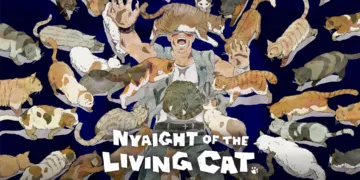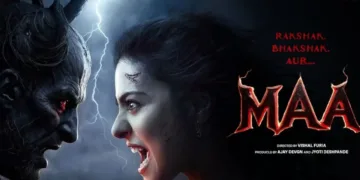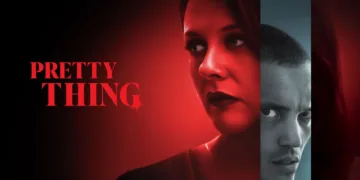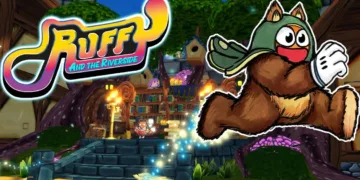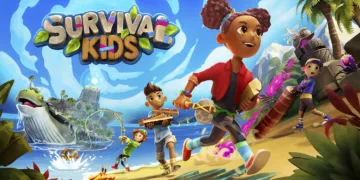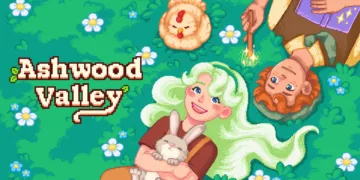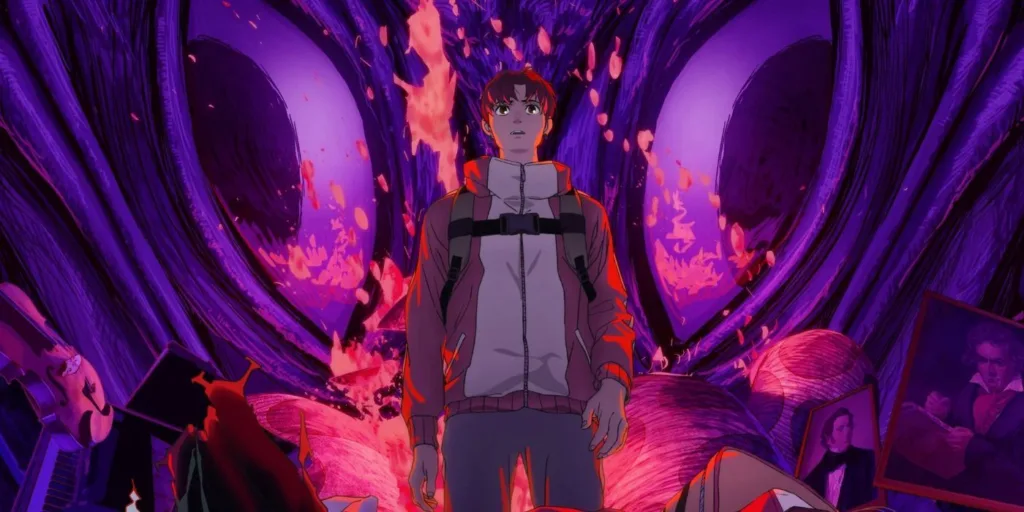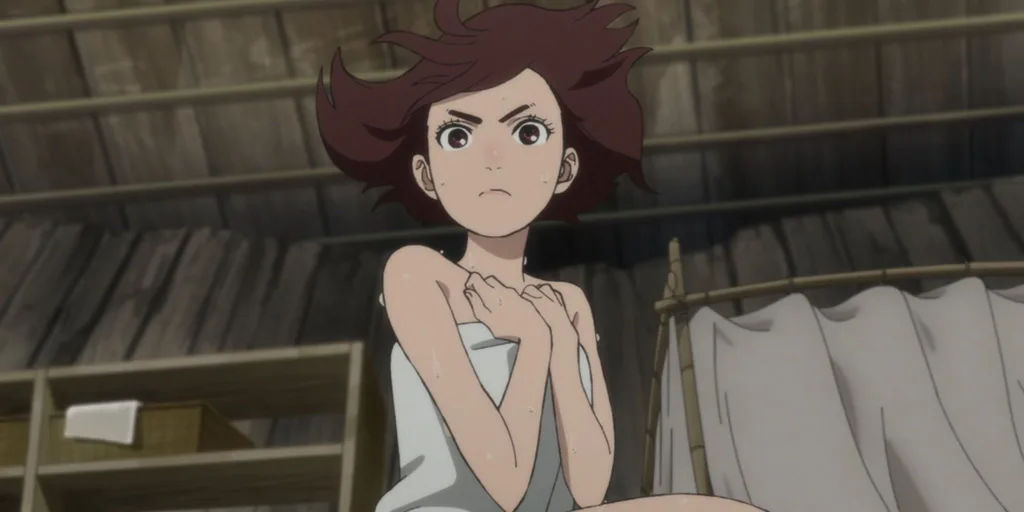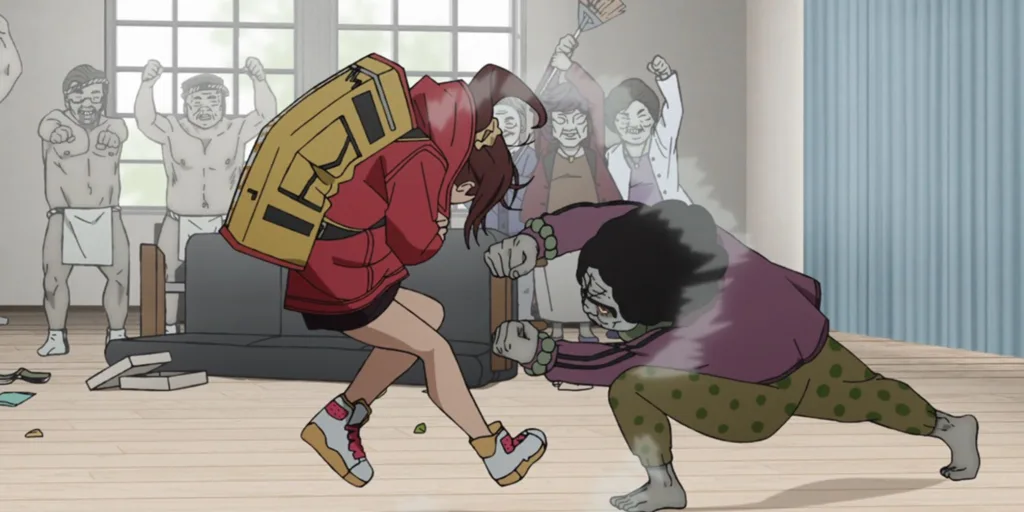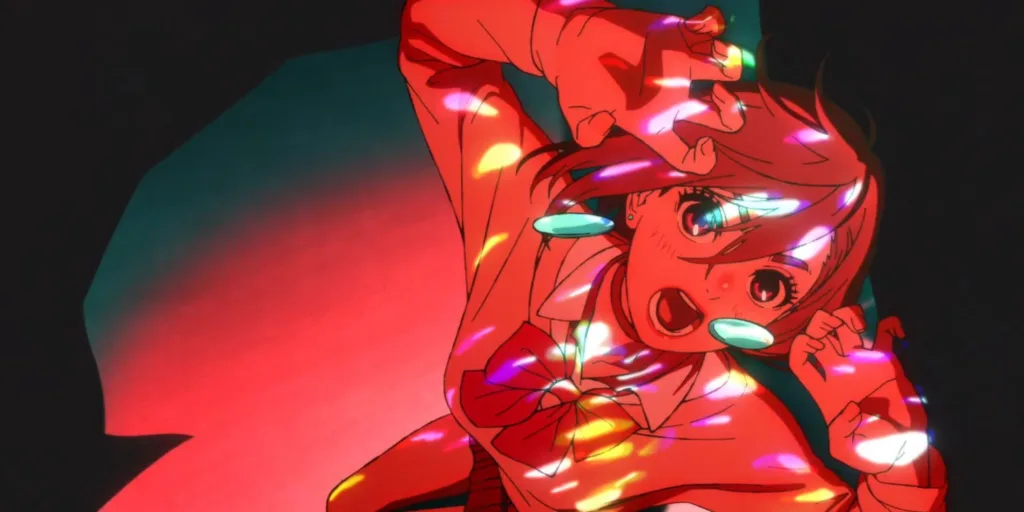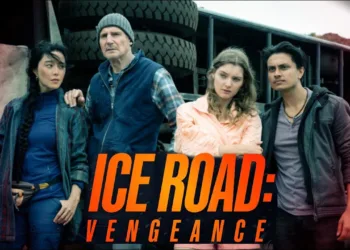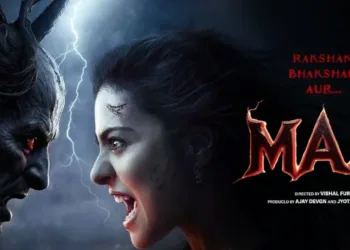DanDaDan Season 2 emerges as a fascinating artifact of contemporary anime’s willingness to wrestle with uncomfortable social realities while maintaining its supernatural entertainment value. Based on Yukinobu Tatsu’s manga, this Science Saru production continues to follow high school students Momo, Okarun, and Jiji as they navigate a world where aliens and demons coexist with very human predators.
The series has established itself as a standout entry in the supernatural comedy-horror genre, but Season 2 marks a significant tonal shift that reveals deeper anxieties about power, exploitation, and the vulnerability of youth in modern society.
The Cursed House Arc, which opens this season, represents a maturation of the series’ thematic concerns. Where Season 1 balanced its supernatural elements with lighter coming-of-age themes, Season 2 confronts audiences with scenarios that feel disturbingly grounded in real-world concerns about sexual assault, economic exploitation, and the ways traditional power structures prey upon the vulnerable.
This evolution reflects a broader trend in contemporary anime toward addressing serious social issues through fantastical frameworks, suggesting that supernatural storytelling may be one of the most effective ways to examine societal problems that might otherwise be too uncomfortable for mainstream entertainment.
Narrative Architecture and Cultural Critique
Season 2’s opening episodes establish a narrative structure that deliberately mirrors real-world power dynamics through its supernatural lens. The immediate continuation from Season 1’s cliffhanger places Momo in a vulnerable position at the hot springs, surrounded by predatory men who represent a very human form of monstrosity. This scene functions as more than mere plot advancement; it serves as a cultural commentary on the persistent threat of sexual violence that young women face, particularly in isolated settings.
The discovery of the mysterious room in Jiji’s house creates a parallel narrative that exposes how economic vulnerability can trap young people in dangerous situations. The revelation that Jiji has been living in what amounts to a sacrificial altar, unaware of the true nature of his housing arrangement, speaks to contemporary anxieties about housing insecurity and the ways landlords can exploit tenants’ desperation.
The Kito family arc introduces a particularly insidious form of antagonist that transcends typical supernatural villains. Their 200-year tradition of human sacrifice, disguised as religious observance and community protection, represents how traditional power structures can perpetuate violence while claiming moral authority. The family’s control over local law enforcement and their ability to operate with impunity reflects real-world concerns about corruption and the ways institutional power can shield predators from consequences.
The connection to the Great Serpent Lord mythology reveals how traditional beliefs can be weaponized to justify exploitation. The Kito family’s religious justification for their actions mirrors how patriarchal and authoritarian systems often cloak their violence in spiritual or cultural legitimacy. This narrative choice positions DanDaDan as part of a growing trend in anime that questions traditional authority structures rather than simply celebrating them.
The escalation from typical supernatural encounters to life-threatening situations reflects a broader shift in how anime approaches youth protagonists. Rather than protecting its teenage characters from serious harm, DanDaDan places them in scenarios where their survival depends on confronting adult predators and systemic violence. This approach challenges the traditional coming-of-age narrative that assumes young people can grow up safely within existing social structures.
The psychological and physical threats facing the protagonists create a sense of genuine danger that many anime series avoid. The house functioning as an altar for human sacrifices transforms domestic space into a site of terror, reflecting contemporary anxieties about how even seemingly safe spaces can harbor hidden dangers.
Character Development as Social Commentary
Momo’s evolution as both a medium and fighter represents a significant departure from traditional anime heroines. Her increased confidence and physical fighting capabilities challenge genre expectations about how young women should respond to threats. The balance between her vulnerability and strength creates a complex character who can be both endangered and empowered, refusing the binary choice between victimhood and invulnerability that often limits female characters in supernatural anime.
Her response to threatening situations consistently emphasizes active resistance rather than passive endurance. This characterization reflects contemporary feminist discourse about women’s agency and the importance of teaching young women to fight back against predators. The series’ refusal to romanticize her moments of vulnerability while celebrating her strength creates a more nuanced portrayal of female empowerment.
Jiji’s character development reveals how economic insecurity can force young people to maintain facades of normalcy while hiding their desperation. His energetic and quirky personality serves as a coping mechanism for the trauma of his family’s circumstances and his isolation in a dangerous living situation. The revelation of his genuine care for others, despite his own vulnerability, creates a character who embodies resilience without falling into bootstrap mythology.
His integration into the core group dynamic represents how found family structures can provide support that biological families and social institutions fail to offer. This theme resonates with contemporary discussions about chosen family and the ways young people create their own support networks when traditional structures prove inadequate.
Okarun’s continued struggle with his powers can be read as a metaphor for masculine anxiety in contemporary society. His transformation sequences and psychological effects represent the difficulty of controlling masculine violence and the fear that power might corrupt or consume him. His role in the group’s supernatural encounters positions him as someone who must constantly negotiate between strength and restraint, reflecting broader cultural conversations about healthy masculinity.
The voice acting performances enhance these character dynamics by bringing emotional depth to what could have been simple supernatural action. The delivery of dialogue creates authentic teenage voices that make the characters’ fears and hopes feel genuine rather than manufactured for plot convenience.
Visual Language and Cultural Representation
Science Saru’s animation excellence serves not merely as entertainment but as a vehicle for social commentary. The studio’s consistency with Season 1’s visual standards while introducing darker, more mature elements reflects how anime can evolve its aesthetic to match its thematic complexity. The character design innovation particularly shines in how it makes the supernatural elements feel integrated with real-world concerns rather than escapist fantasy.
The studio’s approach to supernatural elements creates a visual language that makes abstract social problems concrete and immediate. The contrast between mundane and supernatural settings emphasizes how extraordinary violence can emerge from ordinary circumstances, reflecting how predatory behavior often hides behind normal appearances.
The art direction creates atmospheric depth that supports the series’ social commentary. The darker, more mature visual tone signals to viewers that this season will engage with serious themes while maintaining its supernatural framework. Environmental storytelling through backgrounds reveals how space itself can be weaponized—the house as altar, the hot springs as hunting ground, the shrine as site of historical violence.
Lighting techniques create emotional impact that reinforces the series’ themes about hidden dangers and the ways power operates in shadows. The use of negative space and darkness during combat sequences emphasizes the psychological horror of violence while maintaining the visual excitement of supernatural action.
The Kito family’s unsettling character designs function as visual shorthand for predatory behavior, but they avoid caricature by grounding their menace in recognizable human traits. Their appearance reflects personality and threat level in ways that make them feel like real dangers rather than fantastical monsters. This design choice reinforces the series’ argument that human predators are often more dangerous than supernatural threats.
The kuragari/giant worm creature design creates a visual representation of how traditional beliefs can be twisted into instruments of exploitation. The creature’s emergence from beneath the house literalizes the idea that historical violence continues to shape present circumstances, creating a visual metaphor for intergenerational trauma.
Genre Innovation and Cultural Impact
DanDaDan’s approach to horror elements creates space for discussing mature themes that might otherwise be marginalized in mainstream anime. The series balances psychological horror with supernatural scares in ways that make both feel relevant to contemporary social concerns. The disturbing imagery serves specific thematic purposes rather than existing merely for shock value, creating horror that educates as well as entertains.
The integration of comedy prevents the series from becoming overwhelmingly dark while still maintaining the stakes of its serious themes. Turbo Granny’s comedic contributions provide relief without undermining the reality of the threats the characters face, creating a tonal balance that mirrors how humor can serve as a coping mechanism for trauma.
The series’ treatment of vulnerable characters and its exploration of power dynamics and exploitation themes positions it as part of a new wave of anime that streaming platforms are using to attract mature audiences. The way traditional beliefs clash with modern understanding creates narrative tension that speaks to global audiences grappling with similar cultural conflicts.
The representation of human monsters versus supernatural threats reflects how contemporary storytelling increasingly recognizes that the most dangerous predators are often those who operate within legitimate social structures. This thematic sophistication suggests that anime can serve as a vehicle for serious social commentary while maintaining its entertainment value.
Cultural Evolution and Industry Impact
DanDaDan Season 2 represents a significant evolution in how anime approaches coming-of-age narratives by refusing to sanitize the dangers that young people face. The series’ willingness to show teenage protagonists confronting adult predators and systemic violence reflects a broader cultural shift toward recognizing young people’s capacity for handling serious themes.
The increased stakes and complexity of the character development trajectory suggest that anime can mature alongside its audience without losing its essential appeal. The series demonstrates how supernatural elements can serve as metaphors for real-world problems, creating stories that entertain while educating viewers about important social issues.
The momentum generated by Season 2’s opening episodes suggests that anime audiences are hungry for content that takes their intelligence seriously while still providing the visual spectacle and emotional engagement they expect. This balance between entertainment and education represents a promising direction for the medium’s future development, indicating that anime can continue to evolve as a sophisticated form of cultural commentary while maintaining its popular appeal.
The anime series DanDaDan first premiered in October 2024, with its second season following in July 2025. The story revolves around Momo Ayase, a high school girl who believes in ghosts, and her classmate Okarun, an occult enthusiast who believes in aliens. You can stream DanDaDan on Crunchyroll, Netflix, and Hulu.
Full Credits
Director: Fuga Yamashiro, Abel Gongora
Writers: Hiroshi Seko, Yukinobu Tatsu
Producers: Science SARU
Cast: Shion Wakayama, Natsuki Hanae, Mayumi Tanaka, Nana Mizuki, Ayane Sakura, Kaito Ishikawa, Hiroyuki Yoshino, Naomi Ozora, Abby Trott, AJ Beckles, Lisa Reimold, Aleks Le, Kari Wahlgren, Barbara Goodson
Director of Photography (Cinematographer): Kazuto Izumita
Editors: Kiyoshi Hirose
Composer: Kensuke Ushio
The Review
DanDaDan Season 2
DanDaDan Season 2 transforms supernatural horror into incisive social commentary, using its fantastical framework to examine power, exploitation, and youth vulnerability with remarkable sophistication. Science Saru's visual mastery amplifies themes that feel urgently relevant to contemporary discourse about predatory behavior and systemic violence. While the series maintains its entertainment value through dynamic action and strategic comedy, its willingness to confront uncomfortable truths about human nature elevates it beyond typical anime fare into genuinely important cultural commentary.
PROS
- Sophisticated social commentary through supernatural storytelling
- Exceptional character development and authentic voice acting
- Science Saru's consistently excellent animation quality
- Mature thematic evolution without losing entertainment value
- Effective balance of horror, comedy, and action elements
CONS
- Potentially triggering content regarding assault and exploitation
- Darker tone may alienate fans seeking lighter entertainment
- Some narrative elements feel rushed in early episodes
- Limited focus on certain supporting characters

























